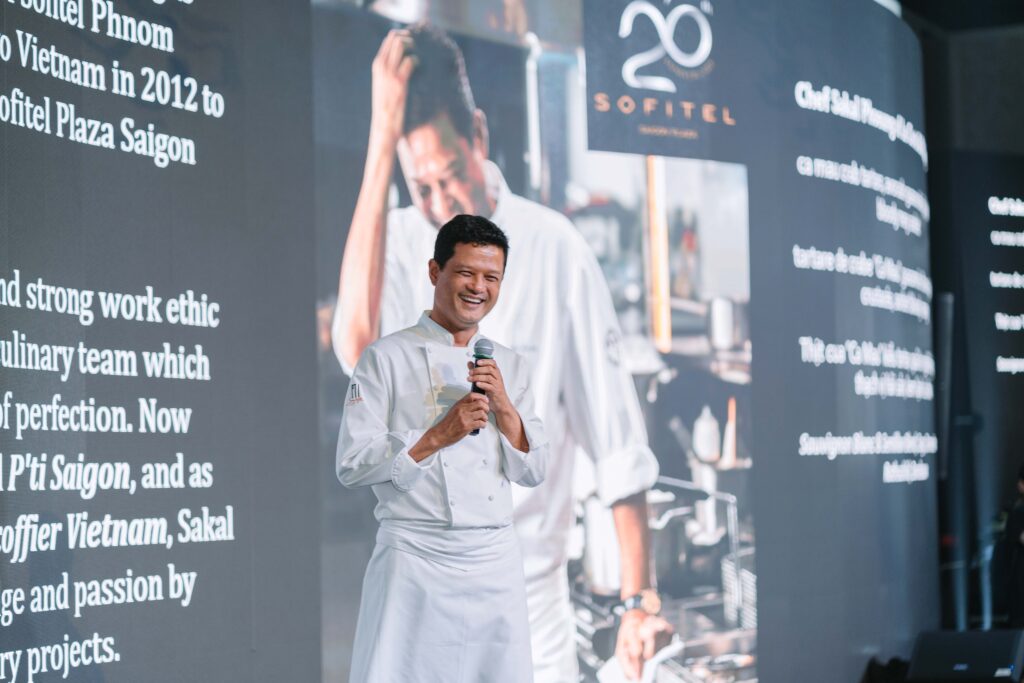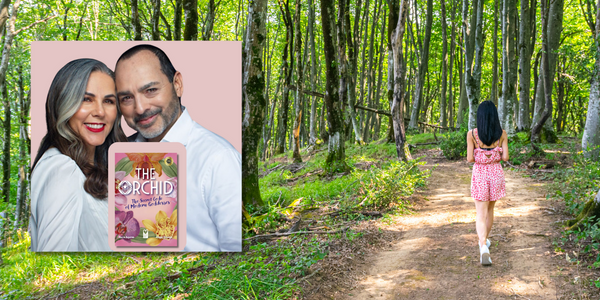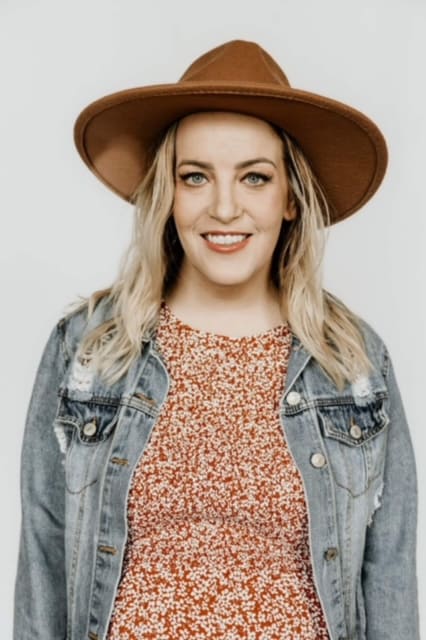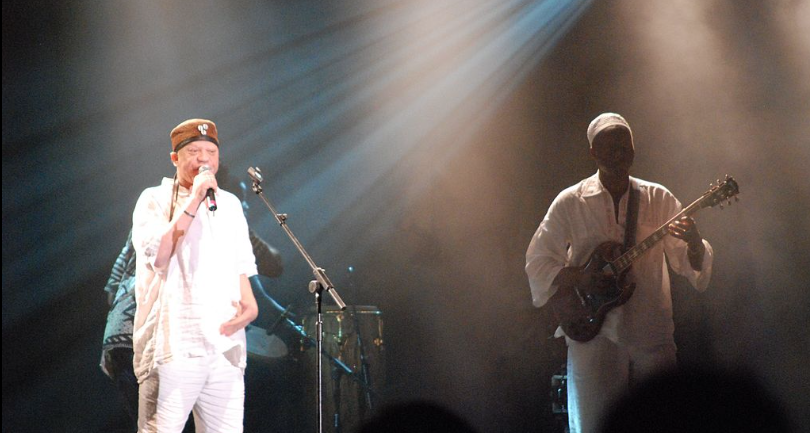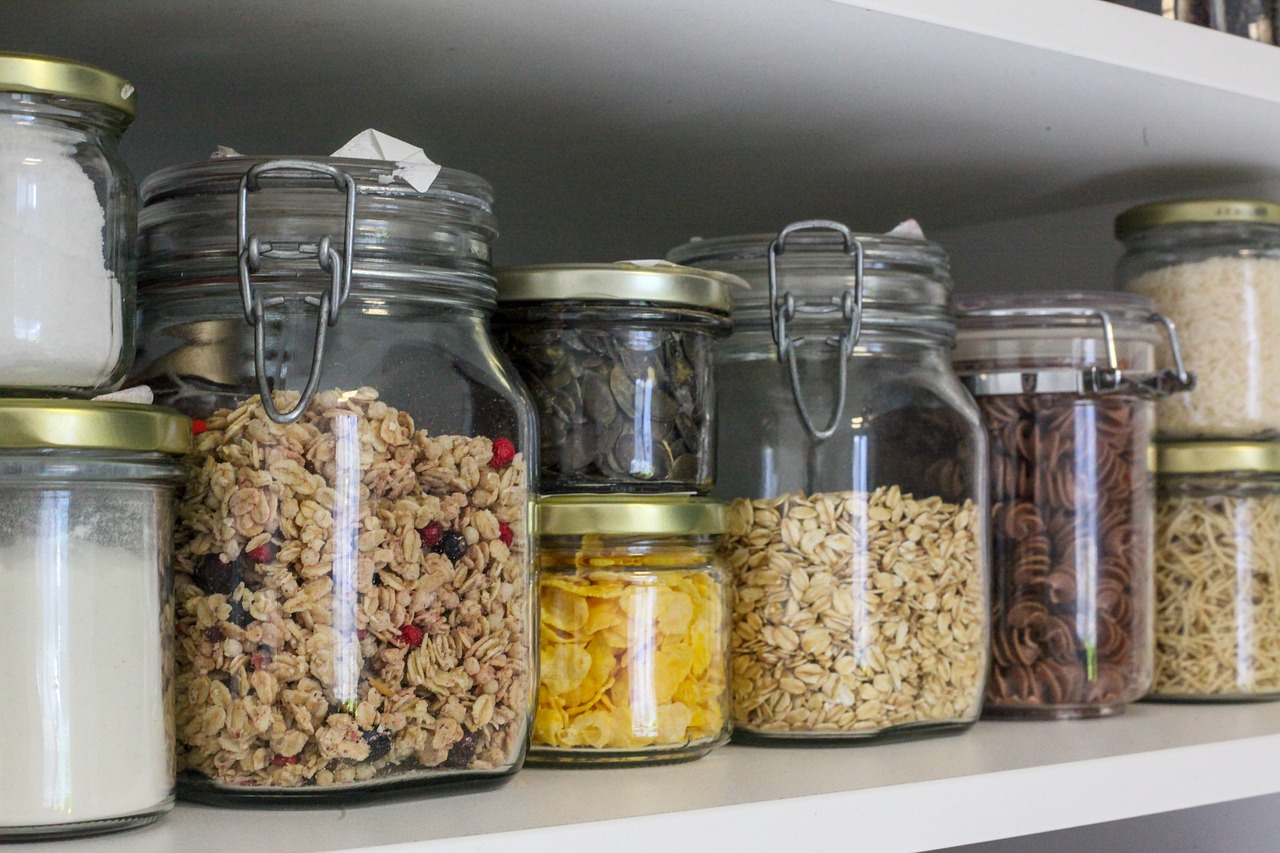DC Coffee Drinkers: Healthy for the Planet, Healthy for People. Rahm Roast Coffee from Dr Christina Rahm
Today we’re talking coffee! The rich and delightful taste of Rahm Roast, crafted from carefully selected coffee beans straight from Guatemala.

Dr. Christina Rahm is a scientist, supermom, devoted partner, and the ultimate coffee aficionado!
With a passion for detoxing and a mission to uplift lives, she’s not just about the lab coat life; she’s out there exploring the globe in pursuit of both science and the perfect cup of joe.

Today’s conversation has been edited for length and clarity. For the full, un-edited conversation, visit FlavRReport’s YouTube channel here.
Joe Winger:
So what I love the most is your introduction, Dr. Christina Rahm, “Mother. wife, scientist and coffee lover.”
Dr. Christina Rahm:
Thank you. Yeah I always start with mother. Now my kids are older. I’m like, am I supposed to say mother to adult children? They were such an integral part of my life. And hey, that was the reason I started drinking coffee. Just to be honest, I had to stay awake to take care of them.
Joe Winger:
Do you remember what first inspired you to get interested in coffee?
Dr. Christina Rahm:
Motherhood, basically..
I grew up in a home where everybody loved coffee but me. I remember when I had my 1st child, and I was thinking, how do all these mothers stay awake?
I worked back then too. It was a lot, working and taking care [of my first baby].
I was delusional because I thought I’m going to have my son, and I thought, I’ll go back to work on Monday. Cause you don’t know. I remember that Monday getting up and calling my mom and saying, “This is not doable. What am I going to do?”
I had a job where they let me take him to work, but still it was a lot. And my mom was like, you’re going to have to drink coffee.
So I started drinking coffee.
My parents loved it growing up. They would offer us coffee with cream and sugar when we were little.
I grew up on a farm and they would offer it and I’d be like, no, I don’t like it. I was the only one in my family that didn’t like it, but I learned to love it after I had a child.
Then I three more [kids]. But I love the taste of it.
Also, as a scientist, I had a pituitary tumor and different types of cancer.
When I started researching, you can’t ever claim that a natural substance cures anything, but I did notice there were certain types of coffee and coffee beans that caused cancer cell death, apoptosis.
So it was one of the things that I added to my regimen.
What happened was, the cancer metastasized and I was trying to eat everything from spirulina to coffee to resveratrol.
I did give up alcohol for a while.
Then someone said one glass of alcohol is good because of the resveratrol.
So I added wine back in [to my diet].
But like I learned to love [coffee]. The more I researched it, the more I understood that it had mold and mitotoxins and it had all kinds of things.
Even though the pure bean could help from a physical perspective and from a healthcare perspective because of the pesticides and GMOs in the land, air and water that we have.
I hate bringing up the topic because people [think] the environment’s not that bad.
The problem is, regardless of your political stance, our environment is not healthy like it used to, because we’ve had so much pollution/
Nuclear war and when a nuclear war happens, it does not leave the stratosphere.
It disseminates across our world.
So a our things – plants and herbs and roots and seeds – you have to be very careful where you get it.
Most of my career I focused a lot on detoxification and really helping clean out the environment.
Things I’ve worked on… You can go to the store and buy coffee or buy vitamins and they can have heavy metals, lead, mercury, horrible things in it.
I don’t want to scare people.
Instead, I’ve worked on creating some things that hopefully will help people feel, look, and be better because we just all need to be as great as we can be.
There’s no easy, one pill solution, right?
Coffee was definitely something for me.
People drink [it] every day, and if they’re going to drink it, I’m hoping they drink something that’s, free of mitotoxins, that has a good pH level, that is fair trade.
I had a whole list of things that were so important to me.
When Rahm Roast launched I was very happy because we ended up getting a 91% cup score. We worked really hard for that. Only 1% of the coffee in the world has a score that high.
But I think what was more important than a score, what’s that going to do for you?
What really matters to me is that the coffee did not have toxins and the coffee did not have heavy metals and it hadn’t been exposed to GMOs or pesticides.
If my name was going to be on it it better be something that’s really helping people and making their life better. That was important to me.
Joe Winger:
Two words you said a second ago, let’s connect them: coffee and detoxification.
What does that process look like for Rahm Roast?
Dr. Christina Rahm:
I went all over, even to Ethiopia because [they] have great coffee.
I would meet with different coffee plantations and different owners trying to find a really good place. We ended up being able to find a place in Guatemala that was on top of a mountain, which had never been exposed to GMOs and pesticides.
The water’s clean, the air’s clean.
It was a very isolated place. We decided we wanted to partner with a business that was small. All they cared about was making something that was just really unique and special. [Unlike most other businesses] they were not worried about mass production.
They’re worried about making sure that it tastes good, which taste was important to us.
But the biggest issue was let’s make sure that everything is fair trade, the organic, the vegan, we wanted everything. I wanted to be sustainable.
For me, sustainable is not enough.
We need to remediate things because you can to be sustainable. It’s not completely accurate, right?
I have a lot of patents based on remediation of things and making sure that you’re not just detoxing, but you’re helping the plants and you’re helping everything grow.
Because we should have this much top soil [gestures to 6 inches] and now we have this much top soil [gestures to 2 inches] and there’s not enough nutrients in it that help the plants and the roots and the seeds. They’re just not the same.
We explored all of that and came up with a process to clean the beans and detox the beans of any kind of monotoxins, mold, fungus, bacteria, viruses, anything surrounding it.
I developed that in 2015. I started by basically writing a series of patents that had to do with getting rid of nuclear waste.
The regeneration of land, air and water and the human body and also the reversal of aging.
What I’ve learned as a scientist and as a human being is to admit failure every day, and then to admit that I’m going to try to be better every day.
And that’s what happened with the coffee.
It was a one step process that involved a four day process to make the cleaning and it’s made from basically a zeolite silica trace mineral vitamin mixture which goes in and cleans the beans.
I think that’s the reason our cup score is so high because the PH level basically getting rid of all those minor toxins, all the things, the beans that are harmful or could be harmful creates a ph level that is very conducive to our body.
I don’t know if you know this, but our Earth is composed of silica and water, right?
As humans, we are too.
So when you put something in your body, you want to make it compatible bioavailable to the body. And I would say that’s another proprietary thing that I do. And I work on things I’m working on.
Understanding the DNA of a coffee bean, and understanding our DNA and then understanding how they would work copacetically together.
Another thing that was really close to me that I actually have not talked about in any interview is the fact that. With coffee and coffee enemas and different things that people have, there’s like a 70 percent increase right now in colon cancer. It’s horrible. And I would credit that to the environment and to all the things we’re being exposed to.
And even vegans are getting colon cancer. Even younger people. You can look it up.
It was in the New York Post, everything else. So I wanted a coffee that a doctor decided functional med doctors or doctors in other countries wanted to help with this area that could use it as a colon cleanse as well.
Again, I have not talked about that anywhere, but for me, it was essential because as a person that’s had so many different types of cancer, I want to put things in my body that will help my body.
What’s interesting about what I do for a living now, I used to work in pharmaceutical and biotech and we could say.
We don’t cure bronchitis, but here’s zithromax to help with bronchitis and it does right from my perspective.
Giving people things that make their body, make them achieve the greatest thing they can, that, which is to be their best self, it’s so important.
And if those things that we give them can also improve the cellular health of their body by making the healthy cells healthier and making the cancerous or the sick cells not even wanna be there, then that is a goal.
There’s been all kinds of studies, there’s all kinds of information which shows that could be possible.
But again, the problem is in theory, yes, that can help people in different areas of health.
But in reality, I don’t feel like it has because I think the coffee beans and coffee has been exposed to so many things in our environment that then sometimes we’re putting more toxins into our body.
So that was really a major focus for me when I worked on the coffee.
We drink coffee every day and we deserve to have really good coffee.
I’m not saying,me making spaghetti and saying my spaghetti is the “best spaghetti in the world.”
I will tell you that I’ve traveled to 89 countries and I’ve studied this for years and this has been a topic of mine since I was in my twenties, that has been important to me.
Then my oldest son, my Mom used to give him the coffee with the sugar and the cream and he would just keep drinking it.
And I would get in an argument with my Mom about why are you giving my Son coffee now?
He’s bouncing off the walls. He just loves it.
So he put fire under my feet on it. I was like, I’m too busy working on all these other projects.
He was like, “Mom, you have to make good coffee.”
Because some people drink four or five glasses a day. So it needs to be healthy for you.
It’s just like water. If you’re going to drink water, you want to drink healthy water; and water is part of the process when I make the coffee too. It’s a specific type of water that helps clean the beans.
It’s interesting. I tried to do it in the United States. I could not find a master coffee maker that could do what I wanted.
I found one in Cyprus [Greece].
So I was in Cyprus introduced to an award winning coffee grinder coffee maker.
He’s won awards all over, [ he] understood my process, understood how to do it.
Then after you tasted it, after it went through the process, he was like, this is amazing. This is the best coffee ever. And again, it makes sense.
Like when we’re healthy, we look better, right?
When coffee beans are healthier, they taste better. They’re better.
It’s just simple and I love it.
I think it’s magical how science works and how all of our DNA is connected. We’re connected to a leaf on a tree. We’re also connected and able to bring coffee to the world that’s going to help people.
I think it is probably one of the things I’ve enjoyed the most in the last three to four years of my life.
Joe Winger:
That’s beautiful. Obviously you have a huge scientific background. Our audience is into the flavor. Food, spirits, wine, coffee based on flavor.
I’m sure you can understand how science can intimidate so many of us.
Is there a very simplified way of explaining what makes Rahm Roast good for the body, good for the planet?
Dr. Christina Rahm:
It’s like going to an organic farm up in the mountains where everything’s perfect and tasting a bite of a watermelon and it just tastes so great.
Or of strawberries.
When you go to these places on these islands that have never been exposed to GMOs and pesticides.
And you’re like, why does this taste better?
Sometimes in the United States, you’ll buy a rose for someone and it doesn’t even smell like a rose, but then you’ll go to a tropical island where they don’t use GMOs or pesticides and it smells so beautiful.
This is the most beautiful rose. It smells so amazing.
The coffee was made and sourced from a single source in a place that was the perfect environment that we could find. We looked everywhere.
Then the process. That was made basically cleaning it until it was beautiful and perfect. It’s like you brush your teeth, you take a bath, you look better.
If you don’t shave or brush your teeth or take a bath for two years, then you may not look the same as you look today.
This coffee has been cleaned in a very holistic way, organic way using only natural.
It tastes amazing. It tastes almost like chocolate.
It’s very smooth.
Using zeolites [like they] used to line the ducts of the Aztec and Incas and Mayas and the pyramids. It’s documented throughout history and all I did was take a process and make sure it was cleaning so that it would look beautiful.
I think it’s simple.
I sourced it from the most amazing place that had not been exposed to pesticides and GMOs, that was fair trade, that everything was a sole source farmer.
We knew everything about the history. I want your audience to also know this.
It’s not just the beans and the plants.
It’s the parent plants and the genetics behind it.
When you see race horses. They breed, right? You pay a lot of money if you have a winner from the Kentucky Derby. Because it’s genetics.
There’s a genetic component and there’s always this debate about genetics and the environment.
Which one’s better?
And so to me, both are important.
So I looked at the genetics of the plants and the seeds
I made sure the environment was a really good environment to raise a healthy environment to raise these amazing coffee beans. And then we just cleaned them and made them even more beautiful so that everyone could taste how amazing they are.
Scientists made GMOs to try to make plants bigger, better, right? That failed.
So as a scientist I went back to school, I went to Harvard and studied nanobiotechnology for a very different reason than most people think.
I studied to see how we could reverse it.
Things naturally from things that we’ve put into our world that weren’t natural, that have hurt us.
Joe Winger:
Incredibly inspirational.
From a corporate point of view, can you talk a little bit about what inspired you to pursue the social responsibility of the company?
Dr. Christina Rahm:
In my career, I worked for the government. I’ve worked for a lot of the top pharmaceutical and biotech companies.
I would say I failed at that in many ways.
Our economy depends on spending a lot of money on health care.
It was a hard time for me, but I never gave up.
From my perspective. Since I had cancer, since I had Lyme’s disease, since I had a child that had cancer, I’ve devoted my life to trying to do the right thing. I have an opportunity to be alive for a reason.
It was a blessing, even though I didn’t feel like it was a blessing when I was diagnosed. I have a warrior strength of fighting anything.
We’ve just got to be better humans, right?
My goal is to make every person have the longest, best life possible.
That means mentally, emotionally, physically, and spiritually. And as a scientist, I feel like it’s on my shoulders and my responsibility to tell the truth and to do it in a positive way instead of being a whistleblower blowing things up.
I want to offer these things that can help people.
About 8-9 years ago, I started really stepping up and talking about social issues, working on female empowerment. I just always try to talk about how we can empower.
When you have gifts, if you have influence, if you have money, if you have power, your job is to protect those weaker than you or that need help.
And somehow we’ve lost that in our move for success.
We think we don’t we forget about that. But for me, that’s my motive to make social change is to it’s my responsibility to be a good human. I’m going to die someday. And I’m going to have to answer for everything I’ve done on this earth.
So I have to try every day to be better.
The coffee was something that was for a social change that I think we need to be aware of without scaring everyone.
And so that has led me to move past that. To run companies. I have 22 companies actually under DRC ventures and a lot of people don’t know that. So there’s 22 companies that I’m actually in charge of right now, trying to make some good social changes in the world.
Joe Winger:
For our audience who wants to learn more about your and Rahm Roast Coffee, what are the best ways?
Dr. Christina Rahm:
DrChristinaRahm.com is my website.
I’m on social media at Instagram, LinkedIn
The root brand sells Rahm Roast at RahmRoast website. We also donate from every bag of coffee to philanthropy as well.









